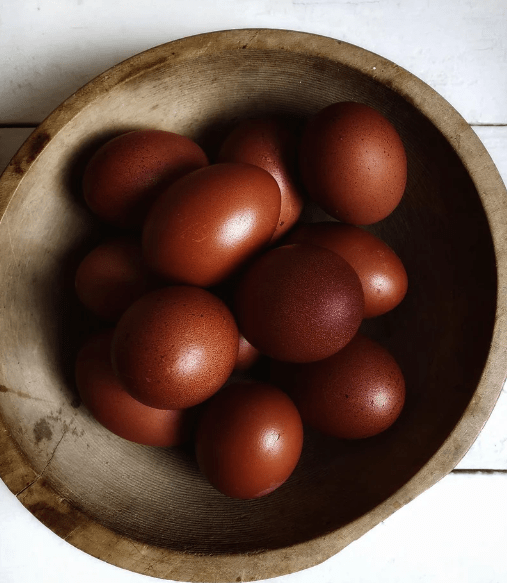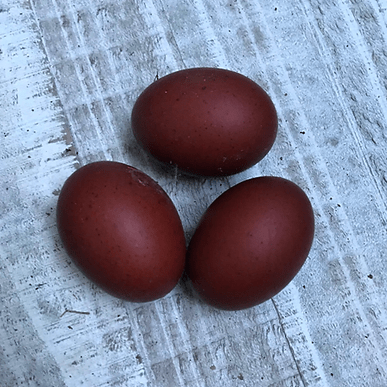Black Copper Marans eggs are prized for their rich, dark chocolate brown shells, making them a popular breed among poultry enthusiasts and gourmet chefs. The eggs are from Black Copper Marnas chickens, which are native to France. The darkness of eggshell color is due to breed-specific genetic characteristics and is often related to the chicken’s diet and overall health. Black Copper Maran eggs are not only beautiful to look at, but also known for their strong flavor and bright yolks, making them popular with bakers and cooking enthusiasts who seek both beauty and flavor.
Table of Contents
Black Copper Maran Egg Production

The Black Copper Maran is well known for its distinctive dark brown eggs. These hens start laying at six months of age and produce 150 to 200 eggs a year. Many factors affect productivity, including your overall health, diet, and environment. Though they do not lay eggs as well as other breeds, they are highly prized for the quality and distinctive appearance of their eggs. Proper care, including a balanced diet and adequate space, is required to ensure stable egg production. Their eggs are not only beautiful to look at but also famous for their rich flavor and nutritional value.
Black Copper Marans Eggs Color
What sets Black Copper Marans eggs apart from other chicken eggs is their eye-catching rich chocolate color. The breed’s unique genetic makeup is responsible for this rich colour, which is also influenced by the chicken’s nutrition and general health. Egg colors can vary, with the darkest eggs often laid around the hen’s peak egg production. Due to its distinctive color, Black Copper Marans eggs are prized by gourmet chefs and poultry fans alike for their rich, flavorful quality and their beauty.
Black Copper Marans Eggs Price
Black Copper Marans eggs are highly prized for their rich flavor and deep chocolate-colored shells, and often fetch a premium in the market. These eggs are extremely rare and popular with high-end chefs and poultry enthusiasts and can be had for as little as $29.96 in the United States. Compared to other chicken breeds, this breed has a lower egg production rate, special genetic characteristics that result in unusual eggshell colors, and the extra care required to keep chickens healthy so the price is significantly higher . . . . Many people believe that they are overpriced but they are well worth the investment due to their excellent quality and visual appeal.
Black Copper Maran Hatching Eggs
The hardy nature of the Black Copper Maran species and the distinctive dark brown color of the eggs make hatched eggs very popular for breeding purposes. These hatching eggs are in demand by poultry enthusiasts who want to raise a flock of black coppers, known for their unique egg color and excellent meat quality. Ideal hatching conditions are essential for effective hatching and require consistent temperature and humidity levels. Due to high demand and careful breeding procedures, hatched eggs of this breed often sell for high prices. Incubating eggs for Black Copper Maran allows breeders to adhere to strict standards for health and genetic quality.
Frequently Asked Questions
Q. Are black copper Marans eggs good?
Black Copper Maran hens typically lay 3 eggs per week or 150 to 200 eggs per year. The quality may not be as good as other varieties, but it is still pretty good. And they lay the most beautiful eggs.
Q. Why are black copper Maran eggs so expensive?
When breeding Maran chickens, those that produce more pigment for a longer period of time are selected for breeding purposes. This leads to higher breeding costs and higher prices for marang chickens and eggs. In addition, the genetic makeup of the bird is linked to the dark color of the eggs.
Q. What age do Copper Marans start laying eggs?
At about 24 to 26 weeks of age, most Marans begin laying eggs. If you give them time to get used to their new surroundings, kittens will be born between 24 and 26 weeks.


